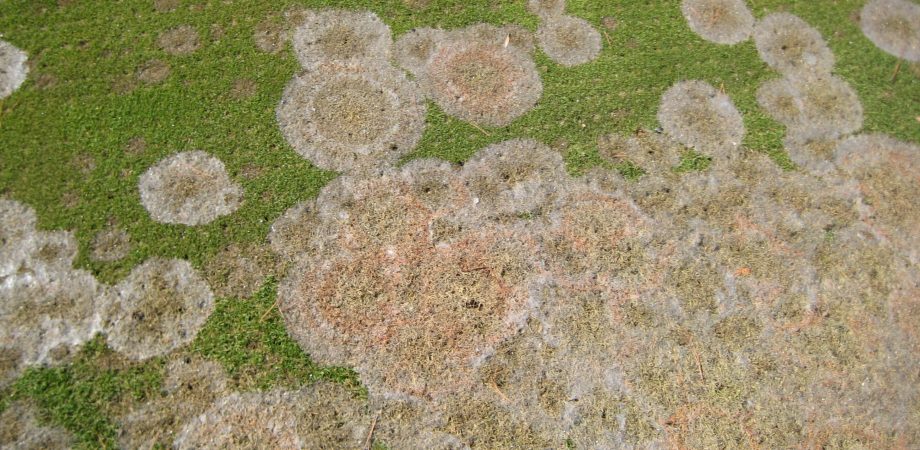Protecting Your Golf Course Turf From Snow Mold with AMGUARD

Labor Day weekend has come and gone, and the transition from summer to fall and winter has begun. Now is a good time to start thinking about one of the last and most important cultural practices of the year, protecting your golf course turf from snow mold.
Snow Mold Fungicide Application Timing
Snow mold fungi need to be actively growing to absorb fungicide applications. If they’re dormant, they won’t absorb the fungicide and the fungicide will not be effective. So, it is important to make sure the snow mold fungi are waking up and just starting to grow before you make your final snow mold fungicide application. A good rule of thumb is to make your snow mold application three weeks or less before the traditional snow cover date in your area. You can definitely apply too early, and research has shown this can significantly reduce fungicide efficacy and snow mold control.
Fungicide Product Selection
Fungicide product selection is very important because at any given site, it’s likely you will have more than one snow mold pathogen. In a lot of cases, different active ingredients (A.I.s) work very well against certain snow mold pathogens but not others. The DMI fungicides are very effective against gray or speckled snow mold, but they are not as effective on pink snow. Fludioxonil and iprodione are very effective on pink snow mold, but they are not very effective on gray and speckled snow mold. That is one reason why mixtures of multiple A.I.s are so important under heavy disease pressure, because most single A.I.s do not provide good control of all snow mold pathogens.
Turfcide 400 Controls All Three Major Snow Mold Pathogens
PCNB, the active ingredient in Turfcide 400 is a multi-site contact fungicide with a unique mode of action. Unlike most other single A.I.s, PCNB is highly effective against not only pink snow mold and Microdochium Patch, but it also provides solid control of gray and speckled snow mold. Because it controls all three major snow mold pathogens, PCNB is widely recognized as the most effective single A.I. for snow mold control.
How To Use Turfcide 400 In Your Snow Mold Control Program
One of the best and easiest ways to incorporate Turfcide 400 / PCNB into a snow mold control program is to use Turfcide 400 instead of chlorothalonil as your contact fungicide. PCNB consistently outperforms chlorothalonil in snow mold field trials, when evaluating PCNB and chlorothalonil as stand-alone treatments, or when comparing them as differing components in otherwise identical fungicide tank mixtures. So, you will get much better snow mold protection simply by making the switch from chlorothalonil to Turfcide 400. You can also include Turfcide 400 in your existing snow mold program to improve snow mold protection and add another different mode of action.
For information about controlling snow mold in general, and to learn more about how to use Turfcide 400 in your snow mold control program this fall, visit the AMGUARD™ Environmental Technologies snow mold website:
Snow Mold – AMGUARD Environmental Technologies (amguardtech.com)
There you can find videos from Dr. Paul Koch of the University of Wisconsin-Madison, the leading snow mold researcher in the country, as well as videos from golf course superintendents who have had outstanding results using Turfcide 400 as the backbone of their snow mold fungicide programs.







